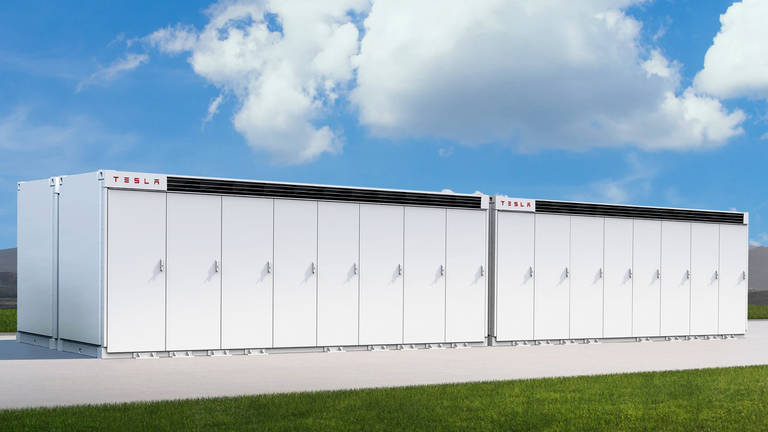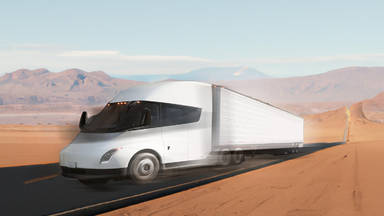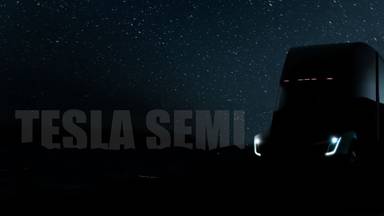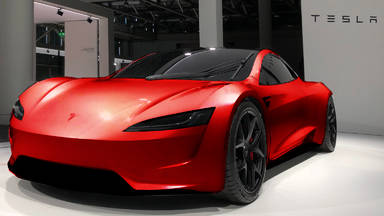
Over the past few years, Tesla has shown the world that electric vehicles are the future. Tesla effectively forced all the other automakers to transition to EVs or die off. However, Tesla's mission goes beyond electric vehicles and it just happens that Tesla's sleeping giant is suddenly waking up behind people's eyes. We will uncover what Tesla's sleeping giant is, and how the development of this product line has been exploding.
Elon Musk has been making some bold claims lately about Tesla's future projections for Tesla's energy division. We have seen many Tesla investors talk about how Tesla is not a car company and that Tesla energy is going to dominate. But it was not until recently when we saw these claims coming to fruition. This will happen from the fast-paced growth of the solar sector, which is estimated to grow 20.5 every year over the next six years.
In Tesla's latest earnings call, Elon Musk claimed that Tesla will become the market leader in solar installations. Elon Musk said that Tesla will also go beyond that. He makes a lot of ambitious projections, but this one in particular stands out because of the convincing data that backs this up.
From 2017 to 2019, Tesla struggled to ramp up the Model 3. According to Elon Musk himself, Tesla was only a few weeks away from bankruptcy during the Model 3 ramp up. In order to keep the company alive Elon Musk had to work 22 hours per day. It was also during this time that Elon Musk had to shift solar city workers to Tesla, and this was in order for Tesla to meet its production goals. Because of this shift in focus, Tesla's solar division struggled to grow in the past couple of years.
Tesla's Model 3 ramp up actually caused Tesla's solar division to go from the largest solar installer to the third largest solar installer. Nevertheless, Tesla is now going head on with his solar division, and as Elon mentioned, is aiming to take back its lead in solar.
There have been many developments going on lately that make Elon Musk confident about Tesla's future and could bring shareholders massive returns in value. Another component that has been making huge strides lately is Tesla's energy storage division, which is primarily powered by the Tesla megapack.
Tesla Megapack is a huge battery pack that utility companies use to store and resell energy. Most recently, on March 8th, it was announced that Tesla was behind a big secret battery project in Angleton, Texas. A city that is 40 miles away from Houston, Texas. In this city, Tesla is quietly deploying over 100 megaWatt-hours of energy storage.
100 megaWatt-hours is an absolutely huge number and is enough energy to power 20,000 homes in the summer. Each megaWatt-hour costs roughly 300,000 so that puts a total project at 30 million. This new Tesla Megapack deployment came into fruition after Texas got hit by a bitter winter storm that led to many rolling blackouts. The Megapack fixes this by storing energy for potential natural disasters.
From the utility company's perspective, Tesla Megapack also makes a significant amount of money and this is through Tesla's proprietary energy trading program, called The Autobidder, which successfully trades energy for huge profits.
As we have seen in the past, Elon Musk actually does what he says he will do. In this case, Tesla's strategy to outcompete and expand the energy industry is to offer competitive pricing, lower the time it takes to install solar panels, and integrate Tesla solar panel with a solar roof (which is Tesla's proprietary roof made out of solar panels), and the Tesla Powerwall (which is Tesla's energy storage system that can store energy for a day).
Elon stated that he's confident this strategy will dominate the solar industry in 2021. Not surprisingly, we have already seen some impressive results for Tesla's energy division in Q4 of 2020. Tesla achieved a record number of vehicle deliveries and almost delivered 500,000 vehicles.
Yet while all eyes were on vehicles, Tesla delivered something much more impressive which was energy sales. This growth occurred because of Tesla's new efficient solar panel that was released in mid-2020. Tesla's new solar panel was 10 more powerful than the previous version and 25% cheaper. In addition to this, Tesla implemented a price match guarantee in order to outcompete the other companies.
Clearly, these changes have helped Tesla grow its solar division significantly what's more interesting is Tesla's latest development in its solar roof. Tesla's solar roof is already quite stunning, but recent news shows that Tesla's taking the next step forward for the solar roof.
On February 22nd, Elon announced that the Tesla solar roof could be coming out to Canada and Europe as early as 2021. About a week after that, on March 2nd, Tesla was spotted making even more developments. A picture taken in Fremont, California showed that Tesla was testing new colors for the solar roof.
This was interesting to see as the Tesla solar roof was originally designed to come in four different styles, including smooth glass, Tuscany glass, slate glass, and textured glass. Ultimately, only the textured glass one came into fruition, but the recent testing site could mean that more styles are coming.
The end goal for this will be to disrupt the roofing industry entirely and replace it with solar roofs. This all sounds great, but it does not even come close to the growth that recently occurred in Tesla's energy storage business in the fourth quarter of 2020. Tesla's solar deployments increased almost 200% year-over-year, and 100% quarter over quarter. This growth was spearheaded by the Tesla Megapack, which is evidently the future of energy storage.
The Tesla Megapack is continuing to become more and more cost efficient as time goes on and will eventually shift most utility companies into purchasing the Tesla Megapack to replace peaker power plants. During times of day where there's peak demand for energy, inefficient power plants called peaker power plants must be turned on in order to supply energy. The Tesla Megapack changes this by allowing utility companies to store energies during times of low demand, and sell that energy during times of peak demand. This has created lots of profit for utility companies so far, and it will continue to do so in the future.









